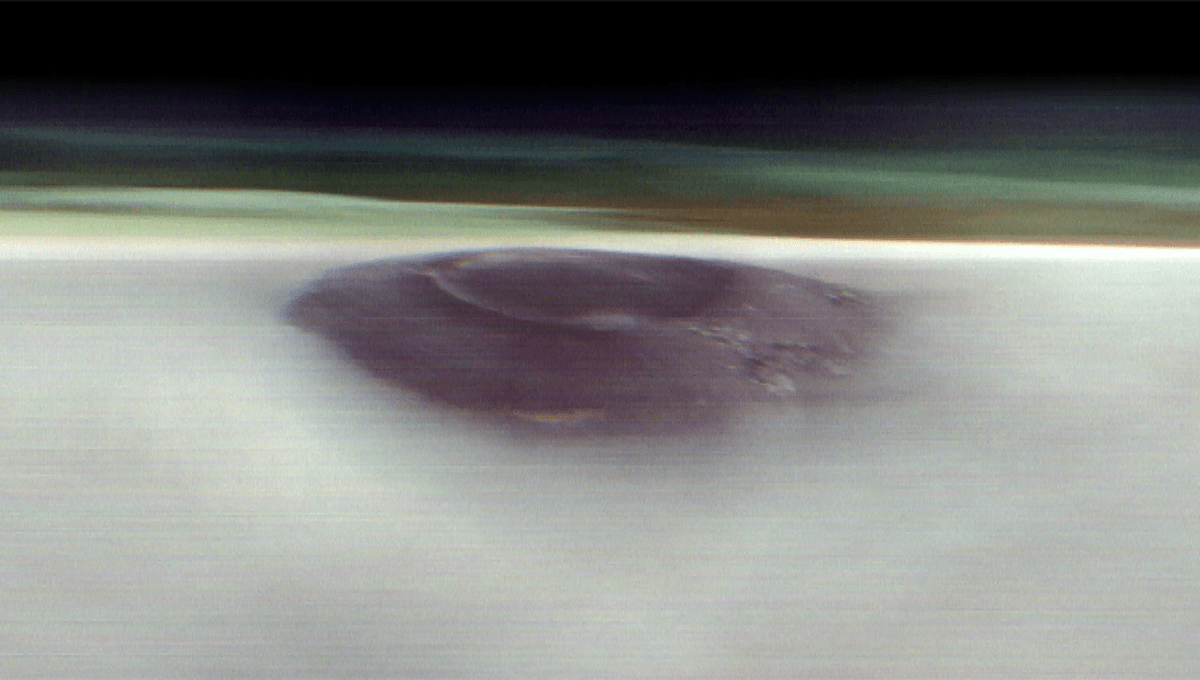
NASA Orbiter Captures Gigantic Arsia Mons Volcano Peeking Through Martian Clouds At Dawn
How did your country report this? Share your view in the comments.
Diverging Reports Breakdown
NASA Orbiter Captures Gigantic Arsia Mons Volcano Peeking Through Martian Clouds At Dawn
NASA’s Mars Odyssey orbiter has captured a stunning image of the Arsia Mons volcano, its summit peeking above the Martian clouds. The volcano is 270 miles (450 kilometers) in diameter, almost 12 miles (20 kilometers) high, and the summit caldera is 72 miles (120 kilometers) wide. The unusual angle of the photo – taken along the planet’s horizon – allows scientists to study dust and water layers in the Martian atmosphere. It’s the first time one of the volcanoes has been imaged on the planet’s horizon, NASA explains. The spacecraft has been in orbit around the planet ever since, breaking the record for the longest orbit of a planet other than Earth.
In 2001, NASA launched the Mars Odyssey mission to map the chemicals and minerals of the Martian surface. The spacecraft has been in orbit around the planet ever since, breaking the record for the longest orbit of a planet other than Earth as it silently maps the planet and returns incredible views from above.
In one of the latest images highlighted by NASA, the Arsia Mons volcano can be seen at dawn, with its summit just above the Martian clouds. In the background, the green haze of Mars’s atmosphere can be seen.
“This panorama marks the first time one of the volcanoes has been imaged on the planet’s horizon,” NASA explains of the image, “offering the same perspective of Mars that astronauts have of the Earth when they peer down from the International Space Station.”
The panorama shows Arsia Mons, clouds, and the green haze of Mars’s atmosphere. Image credit: NASA/JPL-Caltech/ASU
The volcano, while not as large as the Solar System’s largest volcano – Olympus Mons, also on Mars – is gigantic in comparison to Earth’s offerings.
“Arsia Mons is the southernmost of the Tharsis volcanoes. It is 270 miles (450 kilometers) in diameter, almost 12 miles (20 kilometers) high, and the summit caldera is 72 miles (120 kilometers) wide,” NASA’s Jet Propulsion Laboratory explains. “For comparison, the largest volcano on Earth is Mauna Loa. From its base on the sea floor, Mauna Loa measures only 6.3 miles [10 kilometers] high and 75 miles [121 kilometers] in diameter.”
At the top of the volcano, like the other two other volcanoes that form the Tharsis Montes with it, is a giant caldera. These calderas are formed by gigantic volcanic explosions, followed by a collapse.
The unusual angle of the photo – taken along the planet’s horizon – allows scientists to study dust and water layers in the Martian atmosphere. Given the spacecraft’s longevity and countless photos taken by it, they can also build up a picture of how the atmosphere changes over the seasons.
“We’re seeing some really significant seasonal differences in these horizon images,” said planetary scientist Michael D. Smith of NASA’s Goddard Space Flight Center in Greenbelt, Maryland. “It’s giving us new clues to how Mars’ atmosphere evolves over time.”
Arsia Mons is the cloudiest of the volcanos that make up the Tharsis Montes, or Tharsis Mountains. They are regularly surrounded by clouds not made of carbon dioxide, as is often the case on Mars, but by water ice. These clouds form as air is blown against the mountains and then cools quickly, and are especially prominent when the planet is furthest from the Sun.
“We picked Arsia Mons hoping we would see the summit poke above the early morning clouds,” Jonathon Hill of Arizona State University in Tempe, operations lead for Odyssey’s camera, added. “And it didn’t disappoint.”
